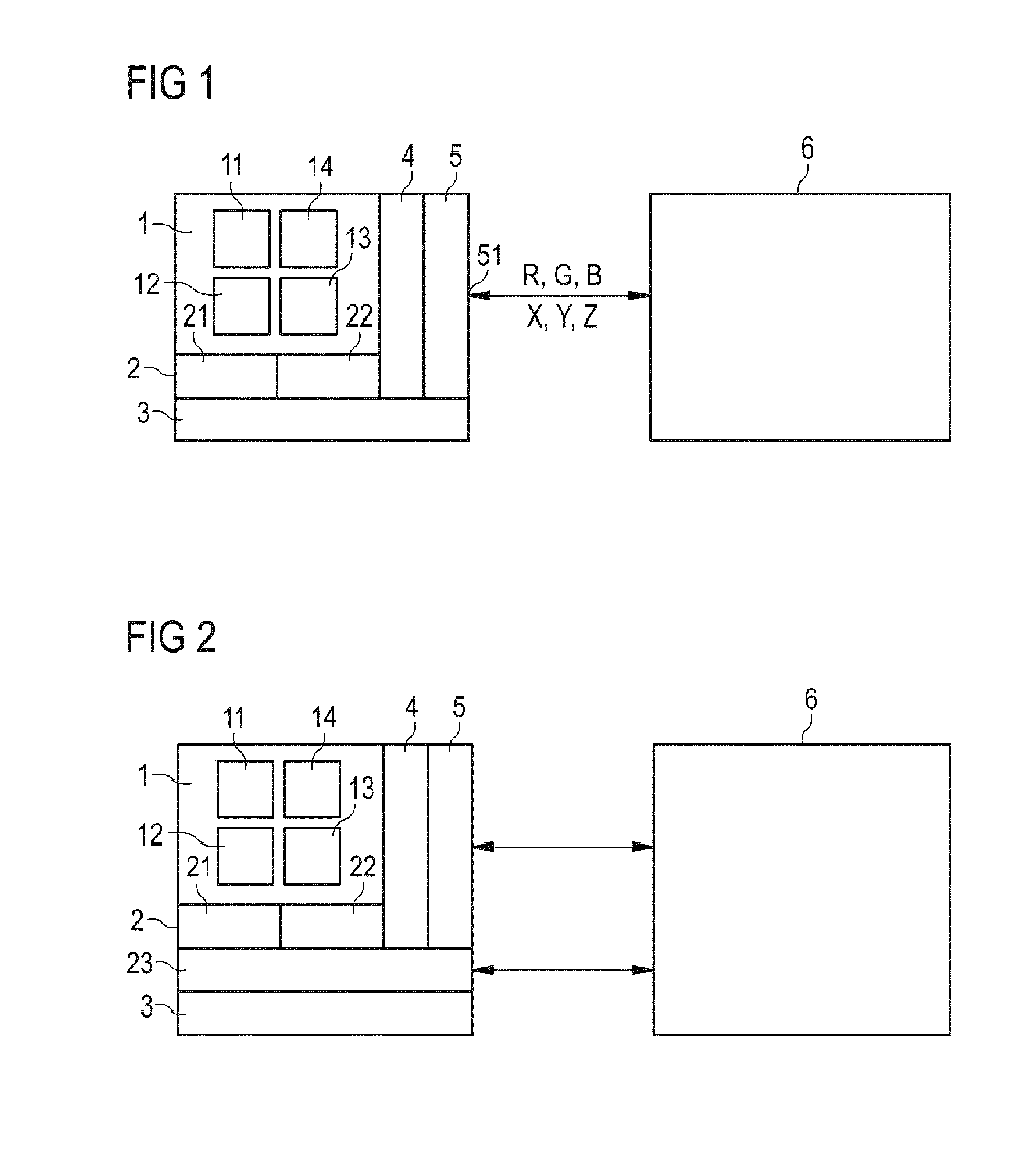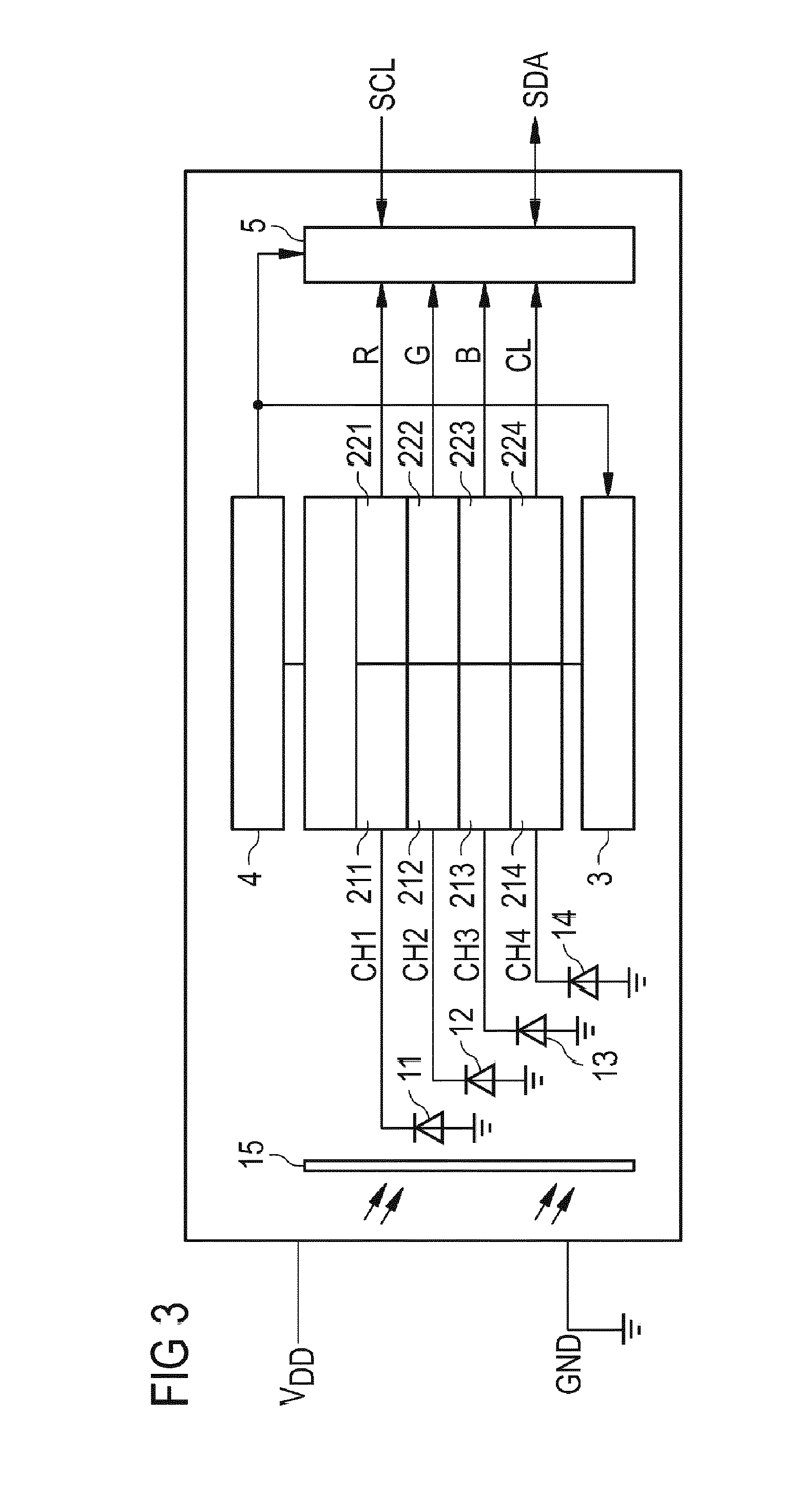Colour sensor arrangement and method for colour sensor calibration
a colour sensor and colour sensor technology, applied in the field of colour sensor arrangement and method for colour sensor calibration, can solve the problems of not being able to provide very accurate devices, unable to meet the standard colour-matching function, and unable to reduce the variance by itself, etc., to achieve accurate xyz tristimulus, accurate device-to-device tolerance, and high device-to-device tolerance
- Summary
- Abstract
- Description
- Claims
- Application Information
AI Technical Summary
Benefits of technology
Problems solved by technology
Method used
Image
Examples
Embodiment Construction
[0039]FIG. 1 depicts a general scheme of an embodiment of the colour sensor arrangement. The colour sensor arrangement comprises a colour sensor 1, a processing unit 2, a memory 3, a control unit 4, and an interface 5.
[0040]The colour sensor 1 further comprises an array of photo elements which, in this particular embodiment, comprises a first, second, third, and fourth photodiode 11, 12, 13, 14. The first, second, and third photodiodes (11, 12, 13) are covered by a first, second and third filter, respectively (not shown). The pass band of the first, second and third filter are adjusted so that they pass only a certain band of light. For example, the first filter has a pass band in the red, the second filter in the green, and the third filter in the blue part of the visible electromagnetic spectrum. The fourth photodiode 14 is not covered by a filter. Alternatively, however, also the fourth photodiode can be covered by a filter having a band according to a yet another part of the vis...
PUM
 Login to View More
Login to View More Abstract
Description
Claims
Application Information
 Login to View More
Login to View More - R&D
- Intellectual Property
- Life Sciences
- Materials
- Tech Scout
- Unparalleled Data Quality
- Higher Quality Content
- 60% Fewer Hallucinations
Browse by: Latest US Patents, China's latest patents, Technical Efficacy Thesaurus, Application Domain, Technology Topic, Popular Technical Reports.
© 2025 PatSnap. All rights reserved.Legal|Privacy policy|Modern Slavery Act Transparency Statement|Sitemap|About US| Contact US: help@patsnap.com


